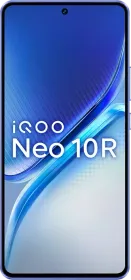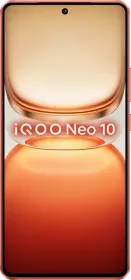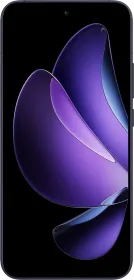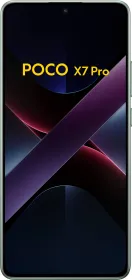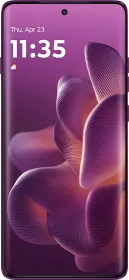As we move toward renewable energy sources, lithium-ion batteries play a crucial role in powering devices we use throughout the day. Be it our smartphones, laptops, speakers, or even our electric vehicles, lithium-ion batteries have become an indispensable part of our routines.
Regarding electric vehicles, two strong lithium-ion contenders are currently available in the market: Nickel Manganese Cobalt (NMC) and Lithium Iron Phosphate (LFP). Although both battery technologies refer to the same family, they possess different characteristics, giving each type of lithium-ion battery its pros and cons.
So, without any further ado, let’s discuss their materials, chemistry, charging speeds and cycle life, safety concerns, and the manufacturing costs entailed with the two battery types.
Materials And Chemistry

NMC batteries come from the lithium-ion family; they rely on the movement of lithium ions between the electrodes to generate electricity. Its name, NMC, comes from using nickel, manganese, and cobalt (in varying proportions) for the cathode (the positive electrode).
The cathode also contains lithium (in the form of the LiNiMnCoO2 compound), which forms the lithium ions. On the other hand, the anode (the negative electrode) is typically made of graphite.
Similar to NMC batteries, LFP batteries also belong to the lithium-ion family. The name LFP comes from using lithium iron phosphate (LiFePO4) for the cathode, while the anode is made of graphite.
When using either of the batteries, lithium ions move from the anode through the electrolyte to the cathode (and vice versa during charging).
Also Read: This e-SUV will be Exported to over 100 Nations from India: Know More Inside
NMC vs. LFP: Energy Density

Before we discuss one of the key differences between NMC and LFP batteries, here’s a quick overview of energy density. Essentially, energy density refers to the amount of energy stored in a material’s unit mass or volume. The higher the energy density, the better a material could perform as a battery.
The newly-launched silicon-carbide batteries are a good example of this; they offer a higher energy density than regular batteries, allowing Android manufacturers to include a larger battery in the same space on a smartphone. Note: please understand that this is an example of energy density, and it doesn’t imply that silicon-carbide batteries should be used on EVs.
Because of the combination of materials used in its cathode (including nickel, manganese, and cobalt), NMC batteries have a higher energy density. These materials have high specific capacities, allowing them to hold more charge or energy per unit weight or volume. Another reason for the higher energy density is the higher voltage.
Due to a higher energy density, NMC batteries are known for offering a longer driving range in electric vehicles or other devices where the weight and size of the batteries are important factors.
Also Read: 2025 Kia Sonet, Seltos, And Carens Revealed: Diesel iMT Powertrain And Gravity Edition Discontinued
In comparison, LFP batteries have a lower energy density, mainly due to using lithium iron phosphate as the cathode material. It has less energy-storage capacity per unit mass or volume and has a lower voltage.
Hence, to provide a similar range as its NMC counterpart, an LPF battery pack needs to be larger; it occupies more space and could be heavier.
Charging Rates and Cycle Life

Given that NMC batteries have a higher energy density, they support faster charging as they can hold more charge per unit mass. In addition, NMC batteries can discharge at a higher rate, implying that they can provide bursts of power when needed. It is for this reason that performance-oriented EVs feature NMC batteries.
Higher energy density sure results in a faster charging speed, but it also exposes the battery to more stress, which can result in increased wear and tear, reduced battery capacity, and heat generation. Together, these factors can negatively impact the battery cycle life. Hence, repeated rapid charging and discharging can shorten an NMC battery’s cycle life and even its maximum charging holding capacity.
Due to the stable phosphate structure in LFP batteries, they are more tolerant of the stress associated with rapid charging. Even though the chemical aging process takes place with regular charging and discharging, it is slower than that of NMC batteries. As a result, the effects of rapid charging are less pronounced on LFP batteries.
Although the numbers vary based on factors like performance, charging rate, the cooling systems installed on the car, and the safety mechanisms for the battery, LFP batteries generally last for around 2 to 3x charge cycles than NMC batteries.
Also Read: Hyundai Creta Electric vs. Maruti Suzuki e-Vitara: Key Differences, Explained
Safety Concerns

Before we move on to discussing the safety concerns, let’s discuss thermal runaway. In the simplest terms, it is a chain reaction that occurs within a battery cell, leading to a rapid increase in temperature, ultimately leading to fire or explosion. Several factors can initiate the process, including overcharging, physical damage, internal short circuits, excessive internal/external heat, or rapid discharge.
In NMC batteries, the cathode consists of metal oxides. Even though the material facilitates high energy density, it is less thermally stable than the phosphate structure in the LFP. If the battery’s temperature rises beyond a certain limit, the metal oxides might decompose into oxygen and trigger the combustion process.
The decomposition of the NMC cathode is a highly exothermic reaction that can release excessive heat, which further accelerates the combustion process, causing a chain reaction that you know is called thermal runaway. Remember how NMC batteries have a higher voltage rating? This might contribute to heat generation during unstable conditions as well.
In comparison, the phosphate structure on the LFP cathodes is more stable; it can withstand higher temperatures while retaining stability. As a result, LFP batteries are less prone to the risk of thermal runaway. If you’ve heard someone say that LFP batteries are safer than NMC batteries, this is the reason why. Even so, extreme conditions and abuse could harm the battery cells, as it is still a lithium-ion battery; it isn’t entirely immune.
Manufacturers equip both NMC and LFP batteries with an advanced thermal management system to control the process, making them safe for day-to-day usage. The system includes sensors and control mechanisms to keep the battery’s temperature, voltage, current, and discharging rate in check. However, the system for NMC could be more complex than that of LFP.
Cost of Manufacturing
Due to the use of nickel and cobalt, NMC batteries are relatively more expensive than LFP batteries. Demand and supply chain concerns can also impact the pricing of the former. In comparison, LFP batteries are more affordable for manufacturers, as they use iron and phosphate for their cathode.
However, at the packing level, the cost could vary based on the design, implementation, and safety mechanisms that a manufacturer wants to equip with the battery.
What is Blade Battery Technology?

BYD’s Blade Battery technology is a version of LFP batteries with elongated battery cells as opposed to smaller modules on regular LFP batteries.
The new technology comprises flat, blade-shaped cells integrated directly into the battery pack structure. This has two key benefits. First, the flat cells help with increasing the energy density a bit. Even though the new technology doesn’t take LFP batteries to the level of NMC batteries, it bridges the gap.
Further, they enhance the structural integrity of the battery pack. This, in turn, helps improve the safety. The elongated cells on Blade Batteries improve heat dissipation, considerably reducing the risk of thermal runaway. Ultimately, BYD’s Blade Battery cells prolong the cycle life.
Market Trends

- The Indian automaker Mahindra relies on LFP batteries for its latest electric SUVs: BE 6 and XEV 9e. In fact, the company uses BYD’s Blade Battery technology on its EVs. What’s interesting is that the brand is offering a lifetime warranty for first-time owners.
- The Tata Nexon EV and Tata Punch EV utilize LFP battery packs. Even the new Tata Curvv features an LFP battery pack. All the vehicles come with a battery warranty of eight years or 1,60,000 kilometers.
- The Chinese manufacturer BYD has three EVs up for sale in India — Seal, Atto 3, and eMax 7 — all of which use the company Blade Battery technology (which uses LFP batteries). An eight-year or 1,60,000 kilometers happens to be the standard warranty for the battery pack across the lineup.
- The MG Windsor EV and the MG ZS EV both use LFP battery packs. While the former offers a lifetime warranty (for first owners), the latter offers an eight-year or 1,60,000 kilometers warranty on the battery pack.
- Even the unreleased Maruti Suzuki e-Vitara will ship with an LFP battery pack.
The use of LFP battery packs in Mahindra’s performance-oriented EVs suggests a shift in technology and market trends. Even though LFP batteries are known for providing a lesser range, no EV in the segment (under Rs. 25 lakhs) offers more range on a single charge.

- On the other hand, companies like Hyundai still prefer using NMC batteries on their EVs. The Korean automaker’s first mass-marketed EV for the Indian market, the Creta EV, features an NMC-based battery pack. Even other EVs from the company, like the Ioniq 5 and the Kona EV, use an NMC battery pack.
- Up until 2024, Kia EV6 also relied on NMC battery packs for its extended range. However, we couldn’t verify whether the 2025 EV6 features the same technology.
- Even the Mahindra XUV 400 packs in an NMC battery pack.
Also Read: Kia EV6 Review (Long Term): Punches Way Above It’s Weight
Hyundai’s decision to use an NMC battery for its Creta EV is reassuring, particularly in a budget-conscious market with abundant LFP-based EVs. It is a testament to the fact that NMC batteries provide a balance of performance and range. Like other brands, Hyundai also offers an eight-year or 1,60,000 kilometers warranty for the Creta EV’s battery pack.
According to reports from mid-2024, Hyundai and Kia partnered with Exide to produce locally sourced LFP batteries for their future EVs. However, when and how the transition will take place is something that we can’t comment on at the moment.
You can follow Smartprix on Twitter, Facebook, Instagram, and Google News. Visit smartprix.com for the latest tech and auto news, reviews, and guides.















